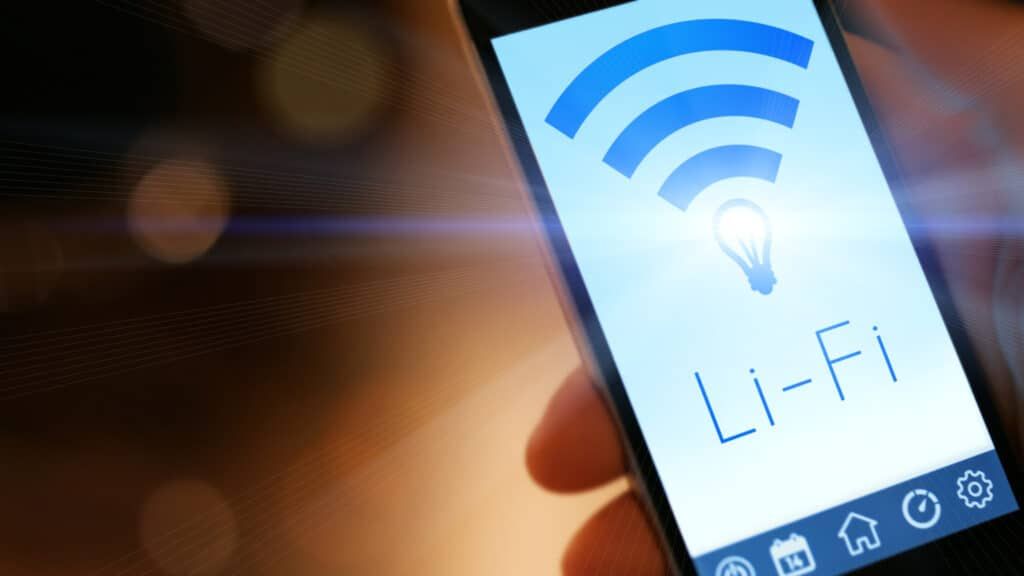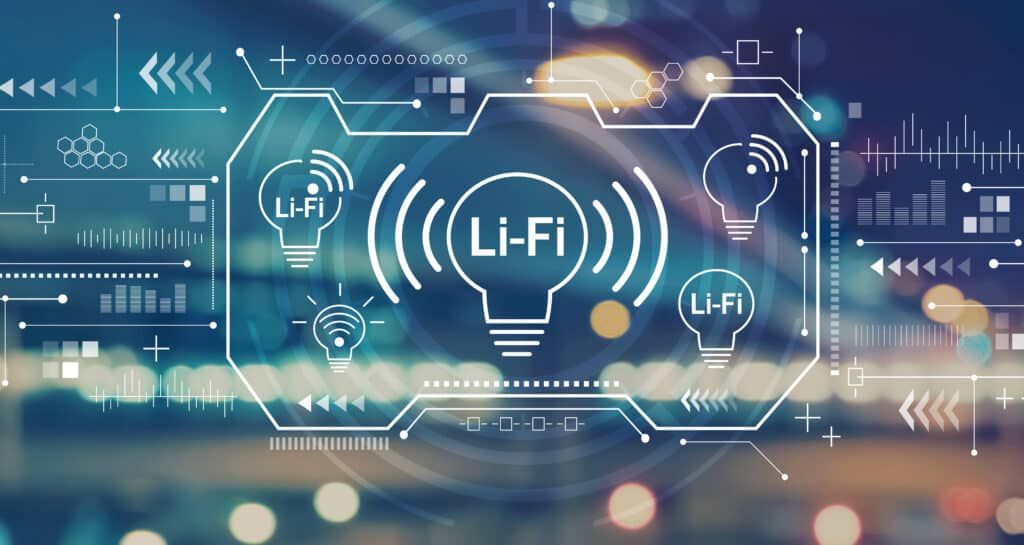
LiFi is what and how it works The Modern Geek
The LiFi : c’is what and how it works ?
Nowadays, many communication technicians are racing to offer high-speed Internet via a wireless network. With the constantly evolving technology, the LiFi was born. What is it exactly and how does it work ? In this article, we reveal some answers.
What’What is LiFi? ?
Considered as an alternative to WiFi, LiFi, meaning Light Fidelity, is a VLC (Visible Light Communication) system using LEDs. It uses the visible part of the electromagnetic spectrum to transmit data. LiFi is named after its inventor, Harald Haas, a German professor of mobile communication.
This technology is based on the coding and sending of data thanks to the frequency or amplitude modulation of external light sources.
It is able to transmit an unlimited amount of data via light, but in restricted areas. Indeed, its protocol layers allow wireless communications, but the range is limited to about 10 m.
Unlike WiFi, this innovative technology uses visible light, the electromagnetic spectrum that humans can perceive. The wavelength is between 280 and 650 nm, or between 670 and 460 THz. In concrete terms, the transmission of data (files, photos, etc.) is made possible by the light.) is obtained via the lighting of LED bulbs with adjustable light intensity.
It is thus advisable to be close to the light sources to connect high-tech devices between them.
The same applies to connected objects thanks to the connection through light.
How it works ?
Two main blocks make up the LiFi system, to know :
- The transmission block ;
- The reception block.
The data to be transmitted goes through the following steps:
- Encoding of digital data in the form of an electrical signal in order to optimize the transmission and to protect it from the degradation caused by the optical channel.
- Converting coded data into a light signal using an electronic circuit designed to drive multiple LEDs. The light intensity is defined according to the nature and quantity of data to be transmitted.
- Propagation of light emitted in space. The set of deformations undergone due to obstacles and the environment in which the light is emitted is called “optical channel”.
- Reception of the light signal by a photoreceiver (camera, photodiode, etc.).). It is then converted into electrical current which is processed, demodulated and decoded to ensure data transmission.
To optimize a quality data transmission, specific optical devices (filter, mirror, lens, etc.) are used in the transmission and reception modules. You want to know more about LiFi ? Continue reading.
What are the advantages of this technology ?
The advantages presented by the LiFi are numerous:
- The use of the frequency band covered by the light spectrum is free.
- The light spectrum is able to cover a frequency band around 300 THz. For comparison, WiFi uses a radio frequency spectrum ranging from 8.3 kHz to 3 THz.
- Optical waves, i.e. the light emitted by LEDs, do not interfere with radio frequencies. Because of this, LiFi is compatible with radio technologies, such as 3F, 4G, WiFi, etc.
- The data is partitioned by walls because, unlike radio waves, light is not able to pass through these obstacles. The security of data is thus ensured.
- Light sources equipped with LiFi can be used to illuminate the room or the environment.
An improvement in the maximum throughput is observed over time and technological developments. If it was 10 Mb/s in 2015, it reaches 40 Mb/s in 2018. These figures continue to increase, thanks in particular to Oledcomm, the pioneer of LiFi in France.

LiFi: for which uses ?
The LiFi applications are numerous given their intrinsic characteristics :
- Optimized flow capacity;
- Energy efficiency;
- The presence of obstacles such as walls that block the signal;
- Etc.
LiFi is the solution to be preferred in hospitals, because medical instruments are not subject to electromagnetic interference. In addition, sensitive data related to patient files are perfectly secured.
In offices, the number of people connected to WiFi has a negative impact on the quality of the bandwidth. LiFi using light beam keeps data rates optimal.

